| |
"The head of marketing at Morgan Creek never even saw the movie all the way through, and he was the guy publicising the movie! He could never make it through the film; it disgusted and distressed him. He said to me at one point, 'You’re an intelligent man, why do you make these movies? They're disgusting and horrible.' And this guy was selling the movie!" |
| |
Director Clive Barker* |
On what may have been the first night of Nightbreed's theatrical run at London's Leicester Square way back in September 1990, I sat with feverish excitement. I loved Hellraiser and instinctively recognised that the once and future novelist was also a fine, if inexperienced filmmaker. I'd seen a trailer and was exposed to the posters and knew that we had left the lower budgets behind. What Barker was attempting here was to create a secluded, secret world, one full of the ultimate outsiders. The curtains open, and... Well. I won't spoil it but after the first minute (I just timed it, it's almost exactly 59 seconds) I was reeling. After that, I just sat back and let the Breed lead. I'm going to base the main review on the new Director's Cut first released in the US in 2014. I first fell for the original Theatrical Cut but I see little point in reviewing a film that is less than what it might have been despite my affection for it. Having watched the original again, I now see only scenes, important scenes, missing. The whole issue of which version of the film to cover is also complicated by the complex nature of the re-edit. We're not talking scenes shortened or excised with new ones slotted in neatly. There are different takes used, different sound and the Theatrical Cut has been shorn of 20 minutes to allow the Director's Cut some room for manoeuvre. It seems the reasons for the new cut were cult interest and financial (anything to claw a little more money back on what must have been seen as a bad investment after its failure at the box office). If you want to know, in meticulous and much appreciated detail, the differences between the two cuts, please head off to Movie Censorship.com here: https://www.movie-censorship.com/report.php?ID=707945
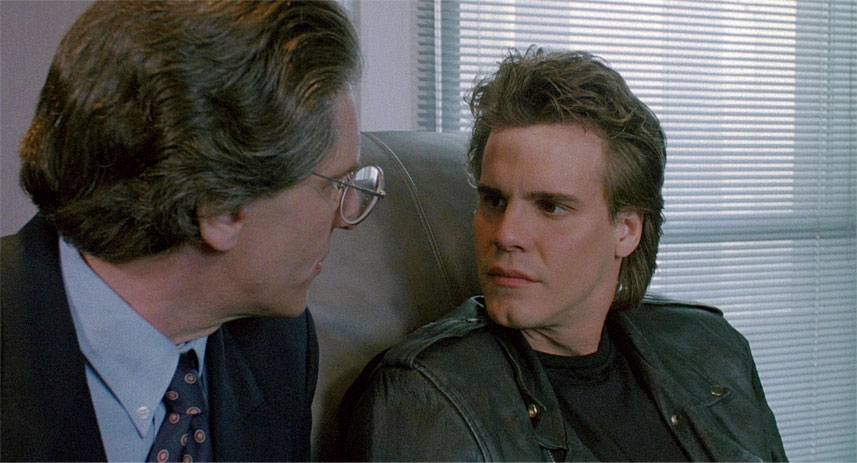
So what's the story? A strange group of humanoid creatures dash for the solace of their graveyard home... It's a dream (really?!) haunting the disturbed car mechanic Boone. His singer girlfriend Lori is besotted and concerned about her man's mental state. Boone's psychoanalyst, Dr. Decker, is unusually enthusiastic about his young patient and demands that he visits him the next day. There is a masked serial killer butchering families on the loose, a man with an horrific mask with buttons for eyes and a zip for a mouth. The suave and gentle sounding Decker slowly convinces Boone that under hypnosis, he had confessed in some detail to these horrific murders all captured on tape. Boone, vulnerable and somewhat gullible, believes the good Doctor and is sent on his way with a whole vial of hallucinogenic pills posing as Valium. Now concerned with his girlfriend's safety, he burns his identification papers while still hallucinating and breaks off contact with her. Trying to commit suicide he finds himself in hospital where another patient mutters about getting to Midian, the place Boone had been dreaming about... I'll stop there. That should be enough information to get you on your way. Of course, the creatures from the opening sprint are real, the 'Tribes of the Moon' and they live beneath the cemetery. The shape-shifters and I hesitate to say 'monsters' given the fact that the Nightbreed are the good guys and gals (and all those in between), are triumphs of make-up and imagination if not common sense. While the mind boggles at each new character thrust forward for our examination, we don't spend enough time with most of them to form an impression of character and they have physical characteristics that would have Darwin choking on his quill. If the creatures obey certain physical laws as keenly as they do their own laws and mythology, what do they feed on, how can some of them actually move, and how in short, do they survive? Let's not dwell bathed by the cold light of reason. This is a film about human monsters after all, a deranged serial killer and a police captain so xenophobic it's a wonder he doesn't just kill every one who doesn't look exactly like he does.
Aside from the creatures (and a few detectable matte paintings that passed muster almost twenty years ago but perhaps not today), Midian is a designer's dream. At once it's a dark, cavernous space crisscrossed by rope bridges and then a claustrophobic tomb with narrow stairs and passages. It has a temple where Midian's sole surviving god is to be worshipped. It is the perfect place for the outcasts of 'natural' society. There's a even a set (when Lori wakes up underground) that features walls with skulls as wallpaper, reminiscent of the Giger Museum Café in Gruyere, Switzerland (well worth a visit by the way). Around every corner there's a creature both beautiful and repellant with varying degrees of either attribute. Truth be told, I found the porcupine girl (Shuna Sassi – they all have names) oddly attractive. I may not be alone. Apart from Barker's literary descriptions, I would love to know the narrative logic behind the design of each creature hoping it's not "Just give me whatever your imagination comes up with..." It would be nice if there were a point to the physicality of these creatures. Ah ha. Maybe there is (but you have to have outside help). Though not explained in the movie itself, there are two books I picked up when the film came out (Chronicles and The Making of the Film) and the former actually explains, in detail, the reason for the physicality of one of the most perverse creatures. Yes, he has a name – all very appropriate – 'Vasty Moses'. He's featured a few times but very briefly in the film itself but Barker actually explains why he looks like a hugely obese man with tiny stubby legs, a massive belly, two stubs as arms and a long neck which has given up supporting a head that now rests on his midriff. And, given all that, it's a credible character account. The other creatures in the Chronicles are all given backstories, some more convincing than others.
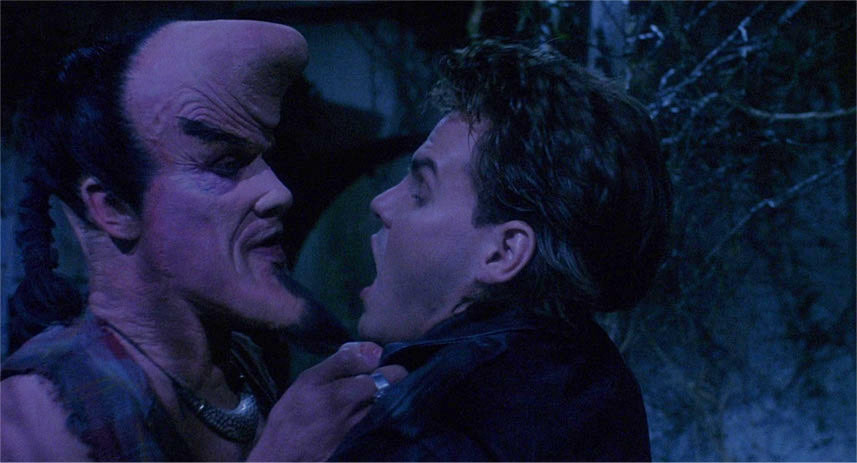
There are no stars in the film, which is a plus as baggage is something characters do not need for this kind of horror fantasy. It's interesting that Rutger Hauer and Christophe Lambert were both considered for the lead role. I'd pay significant money (if I had it) to see Hauer as Boone. Craig Sheffer, a relative newcomer at the time, was obviously seen as someone Barker could mould. Given how hard the part was, Sheffer does a pretty good job. He has to be the tortured everyman, in a hallucinogenic haze, suicidal and then accepting of the reality of creatures his rational brain would be turning somersaults to deny. The harder less-written role is Lori, his girlfriend played by Anne Bobby. Actors are cast, I assume, because they physically resemble the director's vision of the character and have the talent to be convincing in that role. Bobby is clean, really clean. Her face with hair swept back off her forehead has the same circular paleness of the moon (pretty sure that wasn't intentional). But her overnight (overminute more like) transformation into someone who would walk into the bowels of hell out of love isn't completely convincing. Even David in An American Werewolf In London ran like blazes when a werewolf attacked his best friend. To his credit he returned. She's too preppy and straight for me to believe her easy association with the breed. She gives it a good go and I'm always on her side. I could have done with a little more emphasis on a submerged darker side that she could draw on. That's not the acting. That's direction. And there's the stunt casting of another acclaimed director of horror as Decker the psychoanalyst. David Cronenberg always surprises people in interviews by being very intelligent, quietly spoken and about the polar opposite to the images and themes he presents on screen. Since 1990 Cronenberg's output has been a maturation that you can measure with each offering. In Nightbreed, he has to play a range of casual, frustration and murderous and to his credit, I think he pulls it off. His voice has a light timbre, as seductive as it is duplicitous. Then there's the redneck police Captain even though the movie is based in Canada. Famous for his role in Hill Street Blues and respected by myself for his role as Mason in Altered States, Charles Haid finds his inner bastard and lets him run amok.
Composer Danny Elfman, as hot as any composer can be in any career after the monster hit that was 1989's Batman, contributes an idiosyncratic score that incorporates a children's choir, full orchestra, pan pipes and some electronica. It is a score of some strength and dovetails very nicely with the dreamscape mood of the film and the bizarre characters and their actions. I love Elfman's admission that the first time he heard his music orchestrated (Pee Wee's Big Adventure) was one of the most thrilling experiences of his life. I can relate to that. If I'm lucky enough to be involved with an orchestra recording for films I work on, I love sitting amongst the orchestra, closing my eyes and letting my thoughts roam. If you think about it and drill down to the fine detail, each musician in the orchestra is a fellow filmmaker. If I'm directing a film I make sure I tell the orchestra this.
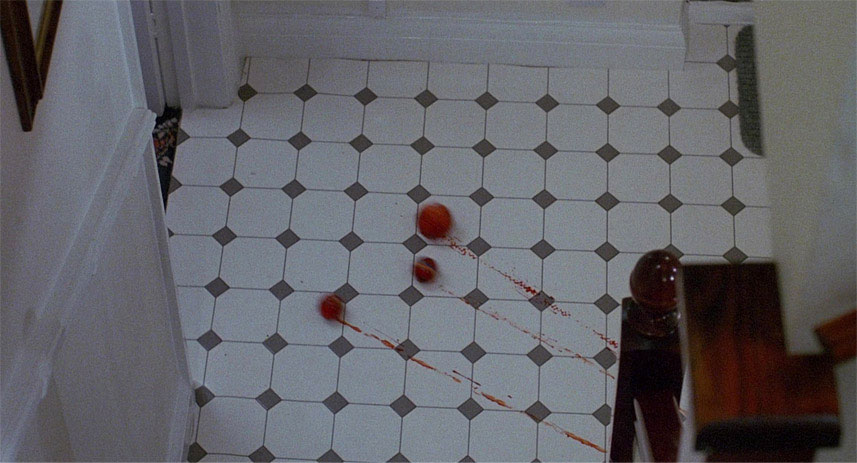
Small details that I really appreciate in movies are aplenty in Nightbreed. After the first slasher murder, the female victim falls sending three children's balls skittering over the floor, Morse coding blood in their wakes. Then there's Narcisse (the skinned-face character) striking a very loud match on the wall interrupting a portentous spiritual ceremony and his subsequent exaggerated "Sorry!" As Lori walks gingerly through Midian encountering 'hours in the make up chair for a three second shot' creatures, we see a bloodied leg in the foreground leaving us to imagine what the rest of the creature looks like. Then there's one of the main characters suddenly appearing and then realising it's just his/her head on a spike wielded by the serial killer. The reconstructed Director's Cut feels like a full meal now rather than the studio imposed horror snack. The executive interference wasn't known to me at the time but there is still plenty to love in the disowned Theatrical version. With Nightbreed, fans had to start somewhere given there was no Director's Cut before 2014.
All that said, even the most rabid fan cannot be blind to Nightbreed's small niggles; the acting of the crowd in the restored night club scene in which Lori sings her heart out is less than believable. I attribute that to a lack of whipping up from the director or the assistant directors. Yes, they're smiling but they are just not engaged. The raised set where a significant event takes place bugged the hell out of me because nowhere in the movie did you ever see a location that was above Midian or above anywhere else. While I should have been in that moment, all I was thinking was "What a naff set!" Speaking of naff... The optical composite of the flying mouth creature was ridiculous (most of the optical enhancements are not great) and the stop motion work (as it tends to do in a live action movie) calls attention to itself to the detriment of total immersion. But if Nightbreed is guilty of one unforgiveable sin (a tad overstated, perhaps), a cliché of such damning shame, I'm almost reluctant to mention it because of my love for the film. Ready? Drum roll... Lori is being chased by a killer with a knife. Guess what she does? Fall over. Fall over!!! Twice!!! Every time I see anyone falling over being chased, my first and only response is "Cheap shot!" Nightbreed is classier and more intelligent than that and doesn't need to fall back on a phony fall to add suspense. If that paltry sum is all I can really criticise then that should tell you how much this movie got under my skin. I loved it and the Director's Cut is a surprising and hugely welcome addition to the whole Nightbreed saga.
Presented in the 1.85:1 aspect ratio, both Theatrical and Director's cuts look terrific. I could detect very few imperfections with the source elements, no sparkle, dust or visible grain. Colour and contrast are solid throughout. Considering the introduction to the Director's Cut led us to believe we'd be seeing a Wicker Man-like hodge-podge from dodgy tape sources, producer Mark Alan Miller obviously discovered good quality prints or decent quality negative to assemble his film from. Both film versions look as good as each other.
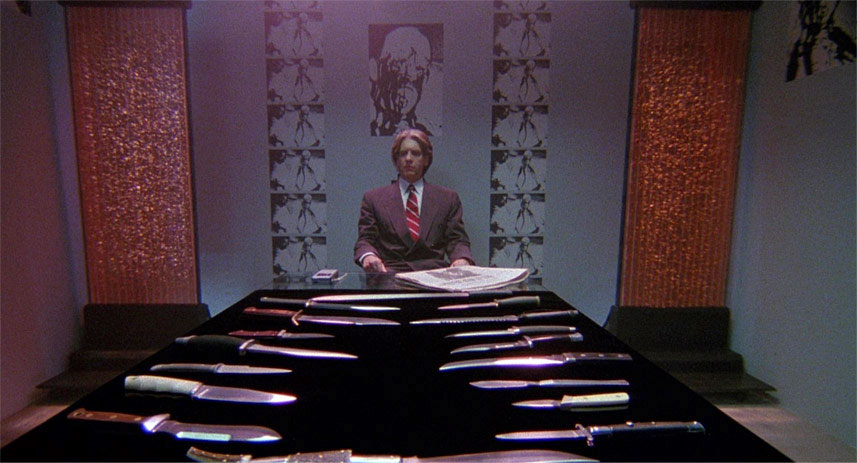
But as far as sound is concerned... The uncompressed 2.0 PCM audio on the Theatrical Cut is perfectly fine with all dialogue clear and some arresting sound design by Bruce Nyznik but where the sound really takes off is in the Director's Cut with its with additional choice of a Lossless 5.1 DTS-HD Master Audio. The sub doesn't have a minute off layering every scene with anything between hints of low frequency to brick rattling vibrations. Talk about torn between versions. But I guess there wasn't the budget to upgrade the Theatrical Cut soundtrack too. It's still a great mix, regardless of presentation.
There are new and improved English subtitles for the deaf and hard-of-hearing.
DISC ONE
Director's Cut
Introduction to the director's cut by Clive Barker and Mark Alan Miller (05' 30")
Regardless of the ravages of illness, age and bad luck, it's lovely to see Clive Barker again. Here he is in a two shot with Mark Alan Miller talking about how the Director's Cut came about. It's not necessary to play this extra to enjoy the Director's Cut but you should to see how much this means to Barker. This is reinforced throughout the pair's commentary to the film.
Audio commentary on the director's cut by writer/director Clive Barker and restoration producer Mark Alan Miller
Clive Barker's health problems come over with every audible, rasping intake of breath but you soon ignore it. He had polyps in his throat removed after finding out that he was getting only ten per cent of the air he should be getting. Barker and Miller cover a lot of ground and it's a delight every now and again to have Barker marvel at what Miller and editor Andrew Furtado managed to accomplish in one month. Ralph McQuarrie, the legendary artist whose work got Star Wars greenlit, is name-checked as he came up with the mural that graces the front credits. Barker seems amazed at how clean the film looks. That shows his age when watching a movie didn't require a suspension of disbelief as much as a blindness to damage. As a direct contrast to the commentary on the Theatrical Cut, one of the two remarks that "Everyone falls in love with Shuna Sassi." If the name isn't familiar, it's the porcupine girl. There's the danger of peer judgement working with fellow directors as actors on set. I remember the story from Mike Nichols directing Orson Welles with Welles booming in that stentorian cadence, "You're going put the camera there?" It was odd to picture John Landis and David Cronenberg as friends. Framing Boone with a 'halo' on the wall as the flames destroy his possessions, Barker remarks, "Occasionally I knew what I was doing. Let's not tell anyone!" They cover editors whose argument in some cases was "audiences won't notice..." These editors should not let be anywhere near a movie. Audiences notice everything especially well loved movies. For example, there's a shot of Boone seeing carnage in a hotel room and you can just make out playing cards scattered randomly on the desk in front of him. A few shots later the cards are magically reassembled into the card tower as they fall apart, a lovely transition shot but continuity-wise, very wrong. We notice everything! Barker remarks that the swirly items in the Inquisition pain sequence were half-inch videotape that someone had thrown into a studio skip. "Shouting in the evenings," is a lovely definition of stage acting by Michael Gambon. Quilled Sassi's sexiness is underlined and the pair end on a very emotional Barker being so happy someone cared enough to resurrect his movie.
Theatrical Cut
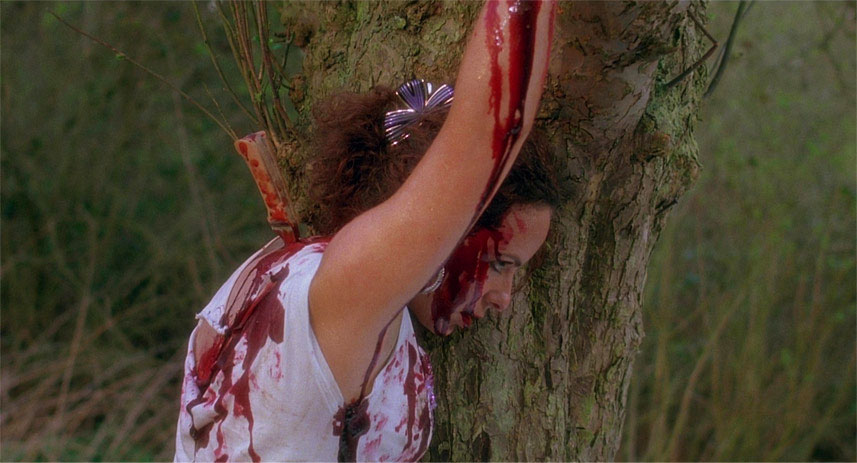
New audio commentary on the theatrical cut by critics Adrian J Smith and David Flint
Smith and Flint acknowledge that they are of my vintage having seen the film in 1990. And even at that screening introduced by Clive Barker, the director still apologised it wasn't his cut. They talk about how the film was difficult to handle and the studio went for the slasher angle. They say that David Cronenberg was the best actor in the cast, which is an interesting judgement! One of the guys pronounces 'matte' as 'matté' which is interesting. I wonder where he read the acute accent? The running time is discussed. Back in 1990 the idea of a movie going over one hour forty, particularly a horror film, was not on. What's a big plus with this commentary is that it's not just a reeling out of facts and figures. It's a real conversation, an informed conversation. They mention what didn't work for them in the Director's Cut (oddly in sync with my own opinion). That doesn't make us right, by the way. "Who would be turned on by a porcupine?" asks one. Well I answered that question earlier... And Mark Alan Miller on the Director's Cut commentary is of the same mind. Both men are not keen on Alejandro Jodorowsky's homoerotic reading of the Decker and Boone/Cabal relationship. They come up with a concise if less academic judgement of "Bollocks!" This is a fine commentary well worth listening to despite their quote of "If you're desperate enough to listen this commentary!"
DISC TWO
Special Features
Memories of Midian (30' 32")
Nicholas Vince, who played Kinski, he of the moon shaped skull, gives us his memories of the shoot and he has lovely stories to tell. He had to dye his fair chest hair and got an unexpected visit from a neighbour. Nightbreed launched his writing career on the back of interest in the characters and he tells a whole host of stories of being made up, playing different roles.
Walking the Line Between Heaven and Hell (23' 30")
At last Kat Ellinger turns up on screen rather than just an audio presence on some of her brilliant commentaries. Nice to see you, Kat! She puts the cultural context of Barker's work in place (big hair, punks). She classifies Barker's work using a century old literature genre, the decadent movement, an aesthetic that celebrates excess and artificiality based on an era where science seemed to have ushered in the death knell for religion. Ellinger's knowledge of Barker's antecedents is truly encyclopaedic. Hugely informative.
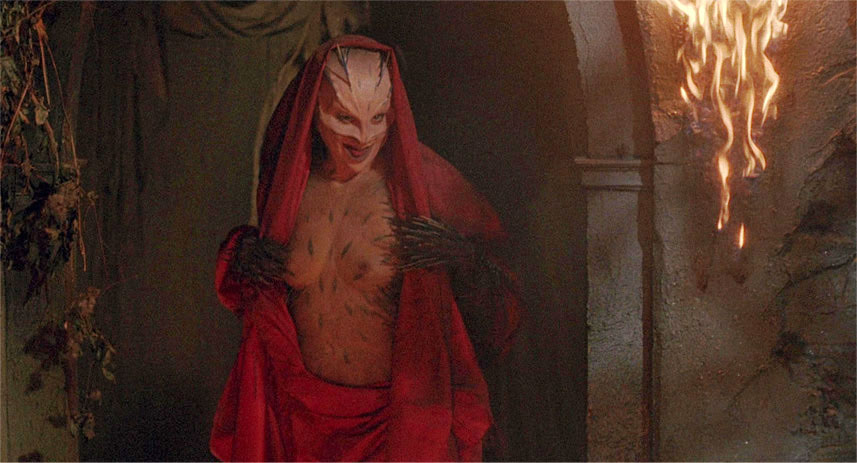
Speaking up for the Monsters, a new video interview with critic Kim Newman (18' 15")
The ever-dependable Kim Newman gives us the background on Clive Barker and his own relationship with the man and his movie. He talks about how wrong-headed the marketing was, even nicking an image from the marketing of another film. He talks about how attitudes change and how for example the good guys of yesterday were not still the good guys of today. He admits that he didn't give the Theatrical Cut a good review because Newman was one of a very small number of insiders who knew what Barker had in mind. I was one of the many who discovered the film as it was and was thrilled to find that there was more to discover. "It's plainly a flawed film but a kind of wonderfully flawed film!"
Tribes of the Moon: Making Nightbreed, an extensive documentary on the making of the film, featuring actors Craig Sheffer, Doug Bradley, Anne Bobby and many more (1hr 12' 17")
This one's a doozy! This features great reminiscences with very talented actors. The actor playing Ohnaka (the tattooed dog owner), Simon Bamford looks identical to his 1990 self which is relatively weird given twenty-four years have passed. Lovely to see Christine McCorkindale without the spines. Anne Bobby takes us through her memories, and there's a VHS clip of her responding to the baby creature she rescues from the sun and it's staggeringly moving, cut out no doubt by executive decision because the movie has simply got to move faster. I've been in a situation when a film I worked on was finished to people's satisfaction and then because of simple familiarity and over-familiarity, it was chipped away at and whittled down so that what made sense didn't anymore. It's a form of losing your nerve because you no longer trust the film because it bores the pants off you. I can understand why this is done but you have to hold your nerve. You have no choice if the money is calling the shots. Doug Bradley as Lylesberg (scarred cheeked elder) shares a lot including the reason why he was re-voiced (and actors hate being re-voiced). The reason may have been as mundane as money which would grate even more. Hugh Ross as Narcisse is wearing the same T Shirt (or a version of it) and his stories are priceless. He was quite flattered to be resurrected for the reshoots given the test audience's response to the film. Bobby's final piece when she remembers herself as a young actress making a pact to remember the experiences of making the film are spot on. If I open my eyes in the morning, part of me thinks "Phew, made it..." My favourite moment is Craig Sheffer who looks great and comes across really well, unafraid to mock himself. Just before of an outtake of him laughing behind a net curtain he says that he was "...burdened by my intensity!" I like actors who can make fun of themselves. It seems like - except for the 3am make up calls - the set was a great place to be.
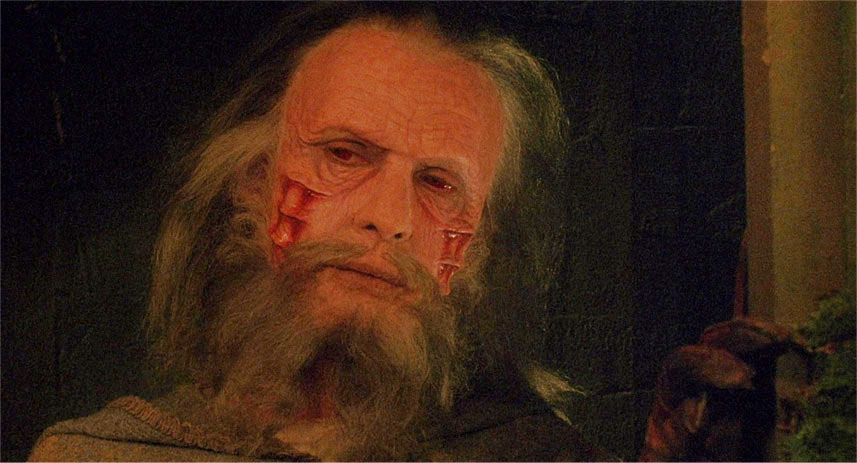
Making Monsters, a documentary on the film's creature designs, featuring special makeup designer Bob Keen (42' 11")
This is a lovely deconstruction of creativity and what's necessary to make imaginations soar. Keen gives us his memories of working with Barker and the respect he shows the filmmaker is laudable. There were certain techniques that model makers used to bring a creation to life and the staff at Image Animation were asked to abandon the work flow and get into free form experimentation with whatever they could lay their hands on. It's the Dead Poet's Society equivalent of standing on your desk to get a new perspective. Image Imagination were literally 'torn apart' by the misrepresentation of their work in the Theatrical version. Bob Keen thanks his team after the most charming behind the scenes clip of Barker and the Breed dancing to some unheard tune. This is a really heartfelt extra feature. Fantastic work, folks.
Fire! Fights! Stunts!, a video interview with second unit director Andy Armstrong (20' 20")
Someone really likes the Papyrus font on these extras... Second unit directing is a very specific skill. You have to cover action in such a way that it doesn't stick out stylistically from the first unit's work. It's not such a big surprise that masked killer Decker has a stand in or stunt man performing most of the action. Armstrong acknowledges the shift in filmmaking (from practical in-camera filmmaking to visual effects dominated efforts). He mentions that Nightbreed may be one of the last horror films without the benefit (dubious or otherwise) of computer-generated imagery.
Cutting Compromise, a video interview with editor Mark Goldblatt (13' 55")
Goldblatt states up front that the long version he first saw "...could do with some work." He acknowledges the luck he has had in his career but he really was put in the Robert Wise situation when Wise was asked by the studio to re-cut Orson Welles' second feature The Magnificent Ambersons. The difference here was that Barker had agreed to work with Goldblatt to try and please the studio that wanted more scares, more horror. Welles was not present, filming in South America when Wise co-operated with the suits. The corporate environment will have things to say, Goldblatt says. Sometimes good things, sometimes not such good things. Hmm. How many professions can you name where you hire someone to do something because they know what they are doing (why trust them with $12 million otherwise?) and then take it off them at the end of the process to impose their own lack of filmmaking smarts? The frustration of filmmaking is that executives only know what's worked in the past, which is what they base their opinions on. How does an art form move forward given that short sightedness?
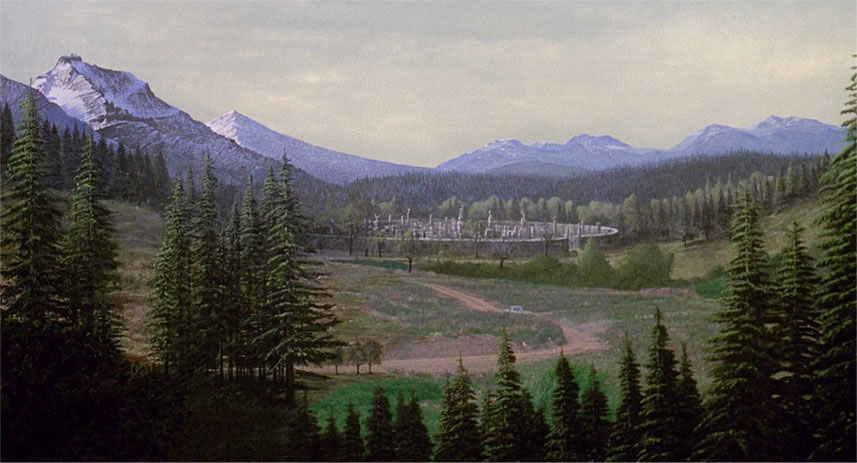
The Painted Landscape, an exploration of the work of concept artist Ralph McQuarrie (5' 08")
As it says on the tin. Not much to add really. McQuarrie is something of a legend in this household. Not only did his artwork convince 20th Century Fox to back some silly little science fantasy called (as it was then) The Star Wars, he also cracked the design of the mothership from Close Encounters of the Third Kind, something extremely close to my heart. Looking at his Wikipedia page, he had a hand in a lot more design work than I had given him credit for.
Deleted and alternate scenes (22' 48")
- Joyce Visits Crime Scene: A short dialogue exchange outside the house of the first victims.
- Boone in Hospital (Alternate): A VHS shot of Boone writhing on a hospital bed intercut with his first meeting with Narcisse. The VHS quality is intercut with a cleaned up print which is more than a bit jarring.
- Lori Interrogation (Part 1): Looking like her close up was shot behind frosted glass, Lori asks for the tape recorder to be switched off.
- Lori Interrogation (Part 2): Same bad quality, Lori thanks Decker for revealing the location was called Midian.
- Lori Meets Up With Cheryl Ann: This was their second meeting, with the same quality lurches from eighth generation VHS to 35mm print as in the earlier scene.
- Lori Saves Babette (Alternate): This is the one I really missed. How an animated creature can evoke so much sympathy... I guess it's all down to the performance of the actor interacting with it. Whoah! That's what I get for pre-empting. This scene is actually after Babette has been reunited with er mother and is an alternate of Lori's conversation with Lylesberg. The clip I thought it was can be found in Tribes of the Moon an earlier extra.
- Boone Saves Lori (Alternate): A short fistfight before Boone goes to save Lori.
- Armory: US spelling accepted. I felt this one reinstated scene in the Director's Cut was somewhat silly but hey, what do I know? The overblown performance of the armourer doesn't help.
- Decker Speaks To His Mask Part 1& 2: So glad they dropped this idea. Cronenberg is less impressive as a disembodied mask voiceover so I'm quite happy this wasn't used.
- Young Nightbreed Fight Back: Unconvincingly a group of Nightbreed children stuff a soldier into a coffin and more convincingly a pin is pulled from a belt grenade with predictable (off screen) results
- Ashberry Finds The Chamber: Another VHS/35mm hybrid cut. If nothing else this clip shows you how vital and important sound actually is. With only the sound recorded at the time, the sequence is ridiculous.
- Joyce Finds Babette (Alternate): I can't remember the dog faced breed in the film but here he/she is dead or dying as the detective finds Babette weeping next to its body.
- Joyce Finds Babette (Alternate): Detective Joyce returns Babette to her mother with production sound of pyrotechnics going off.
- Boone in the Chamber (Alternate): Baphomet gives Boone his new name. The production sound is even more off-putting in this clip.
- Theatrical Ending: A straightforward presentation of the last minutes of the Theatrical Cut with Decker's resurrection. Why here? We will never know.
- Kinski Stalking Boone in the Graveyard: A couple of fairly poor knife lunges from Kinski the moon headed nightbreed.
Extended torture scene (3' 29")
Again, as it says on the tin. It's the torture scene but... extended! I simply cannot take this scene seriously anymore now I know that the streamers are simply unspooled videotape!
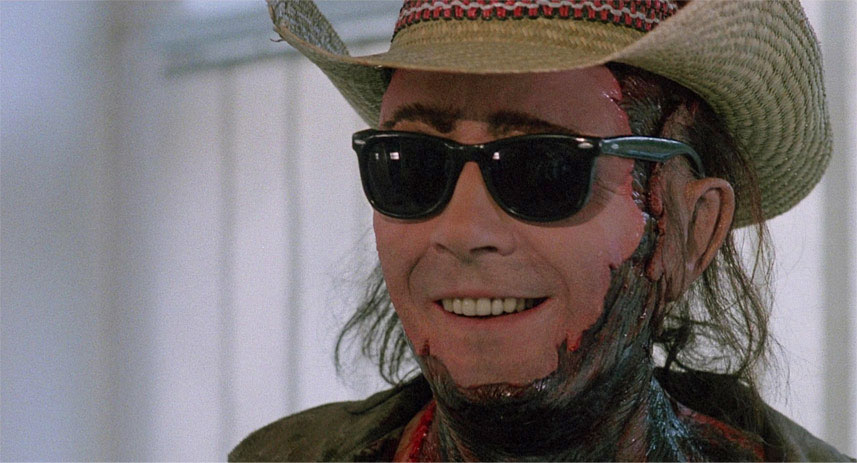
Monster Prosthetics Masterclass (11' 11")
Bob Keen of Image Imagination explains how you take a cast of an actor's face. It's a fascinating process and as much as I like to be fussed over, I'm not sure how happy I would be having my head encased in alginate. Shudder. And I don't even know if I am claustrophobic. There is nothing quite like hearing an expert talk about his/her expertise. Absolutely mesmerising.
Matte painting tests (8' 57")
Interesting but without accompanying information we are just subjected to matte tests. OK. Some look OK. Some don't. But then, they are just tests. These extras are a real test of your tolerance of repeated Danny Elfman cues as the soundtrack...
Makeup tests (4' 52")
Again, fascinating but did we ever see Peloquin's full open mouth action? Maybe in the opening montage. There is something very unnerving about a mouth opening beyond the limits of human anatomy.
Lost stop motion footage (7' 01")
Image Animation was in charge of stop motion animation for Nightbreed but I can't help feeling they were working on a lost cause. 1981's Dragonslayer, using a go-motion motion blur technique perfected by Phil Tippet was the high point of realistic frame-by-frame animation. Image Animation didn't have the resources to create comparable work.
Rehearsal test (2' 56")
This is a partially costumed and partially made up, slow motion re-enactment of the opening shots which works only from the way its cut. Again Elfman cue toleration on 11 out of 10...
Theatrical trailer 1 (1' 05")
"It's just down the road at the edge of town..." This generic "Oh, it's cut really quickly so it must be..." what? Incomprehensible? Yup. You are given no time to take anything in. An odd trailer that does the movie no favours.
Theatrical trailer 2 (1' 56")
"At last, the night has a hero!" Much more in keeping with Barker's original premise this trailer explicitly states that the breed are the good guys...
Rare TV spots (30" and 30")
Two short TV ads which as far as I can make out are identical. The same ridiculous low register voice over misrepresenting the film is featured on each.
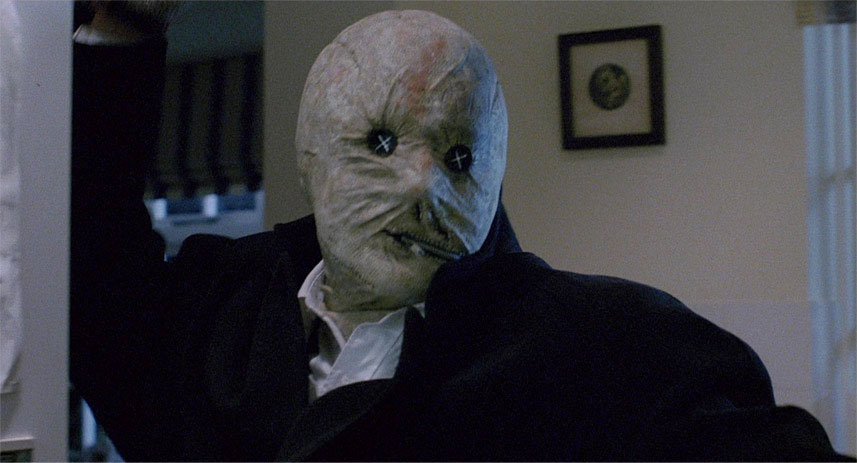
Multiple image galleries, including early sketches, set photos, poster and pre-production art, stills from the UK launch party at Tower Records, and more
-
Early Sketches
32 sketches, most of them Rorschach designs by Barker himself. There are colour storyboards included in this collection.
-
Deleted Scenes
41 colour shots of Peloquin and Shuna Sassi in a scene glimpsed by the main front credit but not in the movie itself. But it looks as if they both really enjoyed themselves, snakes permitting.
-
Poster and Pre-production Art
6 posters from around the globe and five McQuarrie sketches for the opening titles background.
-
On the set of Nightbreed
239 colour stills with a lot of near repetitions and some badly reproduced (colour and contrast wise)
-
The Cast and Crew
62 publicity shots of the Nightbreed and Barker and company.
-
UK launch Party
31 shots of the Tower Records launch party. Am pretty sure that's not Queen Elizabeth. The models referencing the actual make up and artwork of the movie are significantly lower in quality than 'the real thing'...
-
A Human's Guide to the Nightbreed
12 explanation cards of the Breed giving some background information on some of the main Breed members.
Physical Items not available for review include: Reversible sleeve feature original and newly commissioned artwork by Gilles Vranckx, and a Double-sided fold-out poster
Also not available to review: Limited edition 40-page booklet, featuring new writing on the film by author and critic Amy Simmons and an in-depth history of the film's development, release and rehabilitation by Mark Salisbury, co-author of Clive Barker's Nightbreed: The Making of the Film
Apparently the original screenplay is available on the BD-ROM accessible by computer. Not able to check this at this time.
Unaware of the trouble Barker had to deal with from the slasher-hungry studios, I just loved the Theatrical Cut from the moment I saw it. I also really appreciated the Director's Cut and the gaps in the narrative it filled. Nightbreed is a true original and for that alone it's worth celebrating. Barker's original vision may have been assembled late in his life but that has to count for something that it was achieved at all. Bravo to all concerned with its resurrection. Well recommended.
|